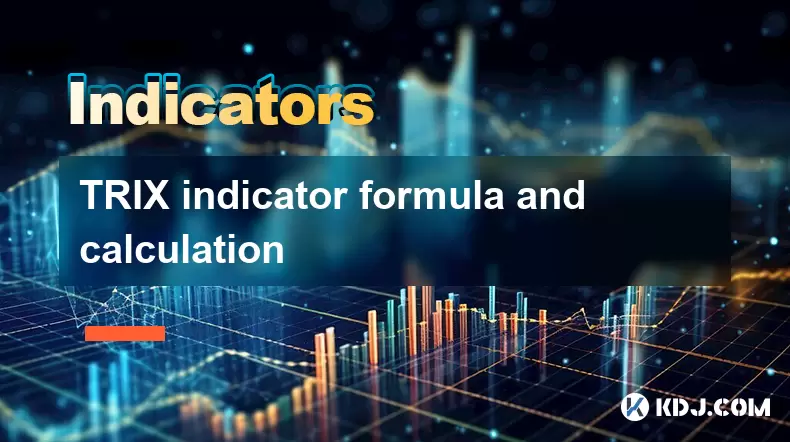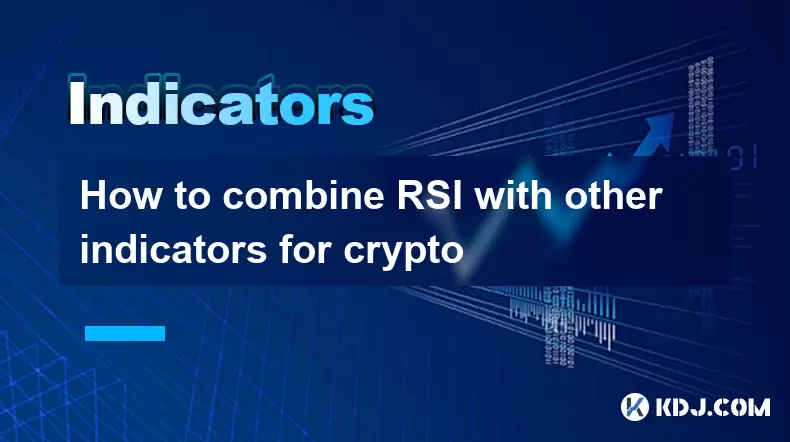-
 Bitcoin
Bitcoin $119,161.9671
1.52% -
 Ethereum
Ethereum $2,995.0722
2.34% -
 XRP
XRP $2.8555
5.32% -
 Tether USDt
Tether USDt $1.0002
0.00% -
 BNB
BNB $692.9308
1.48% -
 Solana
Solana $162.9611
1.87% -
 USDC
USDC $0.9999
0.00% -
 Dogecoin
Dogecoin $0.2014
2.84% -
 TRON
TRON $0.3032
0.90% -
 Cardano
Cardano $0.7464
6.51% -
 Hyperliquid
Hyperliquid $49.1533
5.71% -
 Stellar
Stellar $0.4773
24.77% -
 Sui
Sui $3.4979
3.93% -
 Chainlink
Chainlink $15.8552
6.01% -
 Hedera
Hedera $0.2401
23.85% -
 Bitcoin Cash
Bitcoin Cash $510.0474
0.97% -
 Avalanche
Avalanche $21.5550
4.82% -
 UNUS SED LEO
UNUS SED LEO $9.0389
-0.47% -
 Shiba Inu
Shiba Inu $0.0...01340
2.27% -
 Toncoin
Toncoin $2.9910
0.62% -
 Litecoin
Litecoin $96.4406
4.34% -
 Polkadot
Polkadot $4.0359
4.59% -
 Monero
Monero $338.4759
2.80% -
 Uniswap
Uniswap $8.6460
4.01% -
 Dai
Dai $0.9999
0.00% -
 Ethena USDe
Ethena USDe $1.0007
0.03% -
 Pepe
Pepe $0.0...01254
3.26% -
 Bitget Token
Bitget Token $4.3969
0.79% -
 Aave
Aave $312.2641
3.98% -
 Bittensor
Bittensor $397.0731
4.17%
TRIX indicator formula and calculation
The TRIX indicator is a momentum oscillator used in crypto trading to identify trend reversals and filter out short-term volatility through triple exponential smoothing.
Jul 13, 2025 at 05:21 pm

What is the TRIX Indicator?
The TRIX (Triple Exponential Moving Average) indicator is a momentum oscillator primarily used in technical analysis to identify oversold and overbought conditions, as well as potential trend reversals. It is especially popular among traders who focus on momentum-based strategies within the cryptocurrency market. The core idea behind the TRIX indicator lies in smoothing price data using triple exponential smoothing, which helps eliminate short-term volatility and highlights longer-term trends.
Understanding the Components of the TRIX Formula
The TRIX calculation involves several stages, each building upon the previous one. To fully grasp how it works, it’s essential to understand its components:
- EMA (Exponential Moving Average): This is the foundation of the TRIX calculation. An EMA gives more weight to recent prices compared to a simple moving average.
- Second EMA: After calculating the first EMA, another EMA is applied to this result.
- Third EMA: A final EMA is applied to the second EMA output, completing the triple smoothing process.
- Percentage Difference: The TRIX value is derived by taking the percentage difference between the current and previous triple-smoothed EMA values.
This multi-layered smoothing ensures that the resulting line reflects only significant changes in momentum, filtering out noise from minor price fluctuations.
Step-by-Step Calculation of the TRIX Indicator
To calculate the TRIX value for a given period, follow these steps:
- Start with Price Data: Use closing prices for each time interval (e.g., 1-hour, 4-hour, daily).
- Calculate the First EMA: Choose a period (usually 14 or 15), then compute the Exponential Moving Average of the closing prices.
- Apply the Second EMA: Take the result from the first EMA and apply an EMA again using the same period length.
- Apply the Third EMA: Perform another EMA calculation on the output of the second EMA.
- Compute the Percentage Change: For each period, calculate the percentage change between the current and prior triple-smoothed EMA values. The formula for this step is:
TRIX = (Current Triple EMA - Previous Triple EMA) / Previous Triple EMA 100*
This final value represents the TRIX indicator at that point in time. Repeating this across all data points generates the TRIX line seen on trading platforms.
How to Interpret the TRIX Indicator in Crypto Trading
Once calculated, the TRIX indicator appears as a single line oscillating around a zero line. Here's what different parts of the indicator signify:
- Above Zero Line: When the TRIX line is above zero, it suggests that the asset is experiencing positive momentum, potentially signaling an uptrend.
- Below Zero Line: A TRIX line below zero indicates negative momentum and may reflect a downtrend.
- Crossing Zero Line: A move from negative to positive territory (crossing above zero) can be interpreted as a buy signal, while crossing below zero might indicate a sell signal.
- Divergence: If the price makes a new high but the TRIX does not, this divergence may suggest weakening momentum and a possible reversal.
In cryptocurrency markets, where volatility is high, TRIX can help filter out false signals generated by rapid price swings, making it a valuable tool for swing traders and scalpers alike.
Practical Example of Calculating TRIX Using Cryptocurrency Data
Let’s walk through a simplified example using Bitcoin (BTC) price data over five days:
| Day | Closing Price |
|---|---|
| 1 | $30,000 |
| 2 | $30,500 |
| 3 | $31,000 |
| 4 | $30,800 |
| 5 | $31,200 |
Assume we are using a 14-period EMA, but for simplicity, we’ll use a 2-period EMA for demonstration purposes.
- First EMA: Calculate the EMA(2) for each day.
- Second EMA: Apply EMA(2) to the results from the first EMA.
- Third EMA: Apply EMA(2) once more to the second EMA results.
- TRIX Value: Compute the percentage change between consecutive third EMA values.
After performing these calculations manually or via spreadsheet software like Excel, you will obtain the TRIX values for each day. Plotting them on a chart will show how momentum shifts occur even within a small dataset.
Implementing TRIX in TradingView or Python
For those looking to implement TRIX programmatically, here’s how you can do it in TradingView Pine Script and Python:
TradingView Implementation:
//@version=5
indicator("TRIX", overlay=false)
length = input.int(14, title="Length")
ema1 = ta.ema(close, length)
ema2 = ta.ema(ema1, length)
ema3 = ta.ema(ema2, length)
trix = (ema3 - ema3[1]) / ema3[1] * 100
plot(trix, color=color.green)Python Implementation:
import pandas as pd
import numpy as npdef calculate_trix(df, period=14):
df['ema1'] = df['close'].ewm(span=period, adjust=False).mean()
df['ema2'] = df['ema1'].ewm(span=period, adjust=False).mean()
df['ema3'] = df['ema2'].ewm(span=period, adjust=False).mean()
df['trix'] = (df['ema3'] - df['ema3'].shift(1)) / df['ema3'].shift(1) * 100
return df
Sample usage with a DataFrame 'df' containing 'close' prices
df = pd.read_csv('btc_prices.csv')
df = calculate_trix(df)
print(df[['close', 'trix']])
These implementations allow traders to integrate TRIX into their own trading algorithms or visual analysis tools.
Frequently Asked Questions
What is the standard period used for TRIX?
The most commonly used period for TRIX is 14 or 15, although traders may adjust this depending on the timeframe and asset they're analyzing.
Can TRIX be used alone for trading decisions?
While TRIX provides valuable insights into momentum, it should ideally be combined with other indicators like RSI or MACD to improve accuracy and reduce false signals.
Is TRIX suitable for intraday crypto trading?
Yes, TRIX can be effective for intraday trading when used with appropriate settings and paired with volume indicators to confirm momentum shifts.
How does TRIX differ from MACD?
Unlike MACD, which compares two EMAs directly, TRIX applies triple smoothing before calculating momentum, making it less sensitive to short-term price fluctuations and more focused on long-term trends.
Disclaimer:info@kdj.com
The information provided is not trading advice. kdj.com does not assume any responsibility for any investments made based on the information provided in this article. Cryptocurrencies are highly volatile and it is highly recommended that you invest with caution after thorough research!
If you believe that the content used on this website infringes your copyright, please contact us immediately (info@kdj.com) and we will delete it promptly.
- BlockDAG's BEAT Vesting Pass: Dominating Crypto While HBAR Shows Strength
- 2025-07-14 04:30:12
- Crypto's Underdogs: Stellar (XLM), Dogecoin (DOGE), and the Hunt for the Next Big Thing
- 2025-07-14 04:50:12
- RUVI Token: AI Auditing and Low Price Position It for 100x Gains
- 2025-07-14 04:50:12
- Efinity's Epic Surge: Altcoin Daily Gains and What It Means for You
- 2025-07-14 04:35:12
- Bitcoin Price Surges Amid Crypto Week and Global Market Shifts
- 2025-07-14 05:10:11
- BlockDAG, BONK, XRP: What's Hot and What's Not in the Crypto World
- 2025-07-14 03:30:16
Related knowledge

Advanced RSI strategies for crypto
Jul 13,2025 at 11:01am
Understanding the Basics of RSI in Cryptocurrency TradingThe Relative Strength Index (RSI) is a momentum oscillator used to measure the speed and chan...

Crypto RSI for day trading
Jul 12,2025 at 11:14am
Understanding RSI in the Context of Cryptocurrency TradingThe Relative Strength Index (RSI) is a momentum oscillator used to measure the speed and cha...

Crypto RSI for scalping
Jul 12,2025 at 11:00pm
Understanding RSI in the Context of Crypto TradingThe Relative Strength Index (RSI) is a momentum oscillator widely used by traders to measure the spe...

What does an RSI of 70 mean in crypto
Jul 13,2025 at 06:07pm
Understanding the RSI Indicator in Cryptocurrency TradingThe Relative Strength Index (RSI) is a widely used technical analysis tool that helps traders...

How to avoid RSI false signals in crypto
Jul 13,2025 at 06:21pm
Understanding RSI and Its Role in Crypto TradingThe Relative Strength Index (RSI) is a momentum oscillator used to measure the speed and change of pri...

How to combine RSI with other indicators for crypto
Jul 12,2025 at 08:35am
Understanding the Role of RSI in Crypto TradingThe Relative Strength Index (RSI) is a momentum oscillator that measures the speed and change of price ...

Advanced RSI strategies for crypto
Jul 13,2025 at 11:01am
Understanding the Basics of RSI in Cryptocurrency TradingThe Relative Strength Index (RSI) is a momentum oscillator used to measure the speed and chan...

Crypto RSI for day trading
Jul 12,2025 at 11:14am
Understanding RSI in the Context of Cryptocurrency TradingThe Relative Strength Index (RSI) is a momentum oscillator used to measure the speed and cha...

Crypto RSI for scalping
Jul 12,2025 at 11:00pm
Understanding RSI in the Context of Crypto TradingThe Relative Strength Index (RSI) is a momentum oscillator widely used by traders to measure the spe...

What does an RSI of 70 mean in crypto
Jul 13,2025 at 06:07pm
Understanding the RSI Indicator in Cryptocurrency TradingThe Relative Strength Index (RSI) is a widely used technical analysis tool that helps traders...

How to avoid RSI false signals in crypto
Jul 13,2025 at 06:21pm
Understanding RSI and Its Role in Crypto TradingThe Relative Strength Index (RSI) is a momentum oscillator used to measure the speed and change of pri...

How to combine RSI with other indicators for crypto
Jul 12,2025 at 08:35am
Understanding the Role of RSI in Crypto TradingThe Relative Strength Index (RSI) is a momentum oscillator that measures the speed and change of price ...
See all articles
























































































